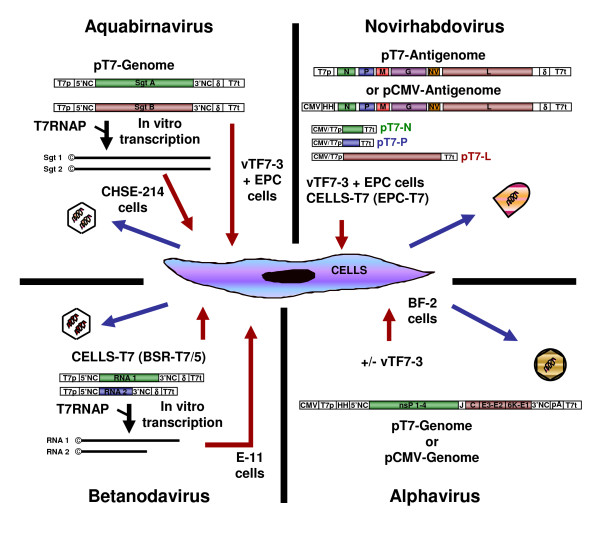Figure 1.
Systems of reverse genetics for fish RNA virus generation entirely from cloned cDNA. Methods used for the recovery from plasmid cDNA of fish RNA viruses, belonging to the Aquabirnavirus, Novirhabdovirus, Betanodavirus and Alphavirus genera, are presented. A schematic representation of each plasmid cDNA encoding viral replicative complex proteins or containing a cDNA copy of full-length viral genome, antigenome or genome segments is drawn. Plasmid DNA or in vitro transcribed RNA were transfected (red arrows) in either untreated fish permissive cells (CHSE-214, E-11 and BF-2 cells) or permissive cells constitutively expressing the T7RNAP (CELLS-T7: fish EPC-T7 cells or Baby Hamster Kidney derived BSR-T7/5 cells) or previously infected with a recombinant vaccinia virus (vTF7-3) encoding the T7RNAP (EPC and BF-2 cells). After the initiation of an infectious cycle, recombinant virus can be harvested (blue arrows). For further details, see section 2. Abbreviations are: T7p, T7 promoter; CMV, cytomegalovirus promoter; HH, hammerhead ribozyme sequence; NC, non-coding region; Sgt, viral genome segment; pA, polyadenylation signal; δ, antigenomic sequence of a ribozyme derived from the hepatitis delta virus; T7t, T7 terminator; ©, cap structure; T7RNAP, T7 RNA polymerase.

